Forest Management for Timber Production: Best Forest Landscape Restoration
- September 18, 2024
- 0 comment
Forest management today has expanded beyond simply harvesting timber, incorporating sustainable practices that balance environmental, economic, and social benefits. While timber production remains an important goal, modern forest management emphasizes protecting biodiversity, maintaining ecosystem services like water purification and carbon storage, and involving local communities in decision-making processes.
This shift recognizes that healthy, well-managed forests are not only essential for timber production but also for long-term ecological stability and human well-being, fostering both economic growth and environmental conservation.

These modern strategies for forest management aim to integrate restoration techniques such as reforestation and agroforestry, ensuring the sustainability of forest landscapes while meeting the growing demand for timber.
Restoration practices focus on enhancing the ecological functions of forests, helping to mitigate climate change and increase resilience against environmental stressors like wildfires and droughts. Community involvement in forest management has become increasingly important, as local knowledge and participation often lead to more successful, sustainable outcomes in both timber production and forest restoration efforts.
Table of Contents:
- Timber Production in Forest Management
- Forest Landscape Restoration (FLR)
- The Role of Forest Management in Climate Change Mitigation
- Challenges in Forest Management for Timber Production
- Policy Frameworks Supporting Forest Management and Restoration
- Community-Based Forestry (CBF)
- Integrating Timber Production and Restoration Goals
- Silvicultural Techniques for Sustainable Timber Harvesting
- Case Study: Forest Management in the Amazon
Understanding About Forest Management
Forest management is the process of planning and implementing strategies to sustainably utilize and maintain forest resources. Traditionally, the primary objective was timber extraction; however, contemporary forest management incorporates a broader spectrum of goals, such as conserving biodiversity, supporting ecosystem services, and benefiting local communities. These new approaches strive to balance environmental sustainability with economic benefits. Sustainable forest management (SFM) has become integral in addressing these diverse needs, ensuring forests can meet current demands while preserving their productivity and ecological health for future generations.
SFM places significant emphasis on the long-term health of forest ecosystems, incorporating practices that allow for sustainable resource extraction without degrading the forest. It balances multiple objectives by maintaining the forest’s natural functions and providing essential services, including carbon storage, water regulation, and habitat conservation. Through strategic interventions like selective logging, monitoring of forest health, and community engagement, SFM helps ensure that forest management practices do not sacrifice ecological integrity for short-term economic gains, thus promoting resilience and sustainability across all aspects of forest use.
The Importance of Sustainable Forest Management (SFM)
Sustainable forest management (SFM) is crucial because it ensures that forests continue to provide economic benefits such as timber, while preserving their ecological integrity. Unlike traditional timber harvesting methods, which can lead to deforestation and environmental degradation, SFM focuses on practices that maintain the health of forest ecosystems over the long term. This approach includes controlled logging, conservation of biodiversity, and protection of vital resources like soil and water, thus preventing the exhaustion of forest ecosystems and enhancing their capacity to recover from disturbances.
In addition to safeguarding biodiversity, SFM plays a vital role in combating climate change by maintaining forest carbon stocks. Healthy forests act as carbon sinks, sequestering atmospheric carbon and mitigating the effects of global warming. Furthermore, SFM enhances forest resilience, making them more adaptable to changing climate conditions and natural threats such as fires and pests. By promoting responsible harvesting and reforestation efforts, SFM helps secure the ongoing productivity and ecological services of forests, ensuring they continue to meet the needs of both present and future generations.
Timber Production in Forest Management
Timber production has long been a cornerstone of forest management, providing essential materials for construction, paper, and other industries while supporting livelihoods. However, unsustainable practices such as clear-cutting can severely damage ecosystems by causing habitat destruction, soil erosion, and loss of biodiversity. Modern forest management strategies now focus on reducing these environmental impacts by employing methods like selective logging, which minimizes damage by only harvesting mature trees while leaving the surrounding forest structure intact.

Reduced-Impact Logging (RIL) is another technique that mitigates the negative effects of timber production. This method involves careful planning and execution to minimize disturbances to the forest floor, waterways, and non-target trees, thereby preserving the overall integrity of the ecosystem. Long-term forest management plans also aim to balance timber production with conservation, ensuring that forests can regenerate naturally and continue providing timber sustainably. This approach not only maintains the forest’s biodiversity but also supports local communities by creating a sustainable economic resource over time.
Forest Landscape Restoration (FLR)
Forest landscape restoration (FLR) is an ecological approach aimed at regaining the functionality of degraded or deforested landscapes. It not only restores forest ecosystems but also enhances human well-being by improving ecosystem services such as water regulation, carbon sequestration, and biodiversity support. FLR employs techniques like reforestation, agroforestry, and assisted natural regeneration to restore forest landscapes while maintaining sustainable land uses such as agriculture and timber production.

FLR recognizes that forest restoration is not merely about planting trees but involves restoring the entire forest landscape to ensure ecological health and sustainability. This holistic approach balances economic development with environmental restoration, helping communities recover from the effects of deforestation. FLR initiatives often focus on areas where ecosystem services, such as soil fertility and water regulation, have been compromised, allowing these ecosystems to recover while supporting local livelihoods through sustainable land-use practices.
The Role of Forest Management in Climate Change Mitigation
- Carbon Sequestration: Forests absorb carbon dioxide (CO2) from the atmosphere through photosynthesis, acting as natural carbon sinks. Effective forest management enhances this ability by maintaining healthy, thriving forests.
- Preventing Deforestation: Sustainable forest management (SFM) plays a vital role in preventing deforestation, which helps preserve existing carbon stocks and prevents the release of stored carbon into the atmosphere.
- Forest Restoration: Reforestation and afforestation efforts increase the capacity of forests to sequester carbon, helping restore degraded lands and improve overall ecosystem resilience.
- Reducing Forest Degradation: By managing forests sustainably, degradation caused by poor logging practices, pests, or fires can be minimized, which helps avoid the loss of carbon stored in trees and soil.
- Biodiversity Conservation: Well-managed forests support biodiversity, which in turn enhances the stability of forest ecosystems, enabling them to better adapt to climate change and continue sequestering carbon.
- Sustainable Timber Production: Harvesting timber using sustainable practices ensures that forests can regrow and continue to sequester carbon, all while providing resources for economic development.
- Agroforestry and Mixed Land Use: Integrating forests with agriculture and other land uses helps sequester carbon while providing food and income, making forests part of holistic climate change mitigation strategies.
- Long-Term Carbon Storage: Sustainable forest management practices, such as selective logging and reducing forest fires, contribute to long-term carbon storage by ensuring forests remain healthy and productive for future generations.
- Global Climate Strategy Integration: Forest management is increasingly being integrated into global climate change strategies, with carbon credits and forest-based solutions being promoted to offset emissions and meet climate goals.
Restoring degraded forests through practices like reforestation, afforestation, and agroforestry can further enhance carbon sequestration. By increasing forest cover, these practices improve biodiversity and ecosystem resilience, ensuring that forests continue to play a role in mitigating climate change. Additionally, sustainable harvesting methods reduce the carbon footprint of timber production while maintaining forest ecosystems, offering a win-win approach for both climate mitigation and economic development.
Challenges in Forest Management for Timber Production
Despite the advantages of sustainable forest management, several challenges hinder its widespread implementation. One major challenge is illegal logging, which undermines efforts to manage forests sustainably by depleting resources and causing environmental damage. In many cases, weak enforcement of forest management regulations and governance issues make it difficult to curb unsustainable practices. Additionally, financial constraints often limit the ability of forest owners and communities to adopt more sustainable practices, as these methods can require upfront investments in training, equipment, and long-term planning.

Another significant challenge is the pressure to meet immediate economic needs, particularly in developing countries where reliance on timber for income can lead to unsustainable practices. This creates a cycle where forests are overexploited without sufficient time for recovery, leading to long-term degradation. Overcoming these challenges requires stronger policy frameworks, better enforcement of laws, and financial incentives to promote sustainable timber production and forest restoration practices.
Policy Frameworks Supporting Forest Management and Restoration
Governments and international organizations play a critical role in promoting sustainable forest management and restoration. Policy frameworks such as the United Nations’ REDD+ (Reducing Emissions from Deforestation and Forest Degradation) and the Forest Stewardship Council (FSC) certification provide incentives for sustainable practices. These frameworks encourage responsible forest management by aligning economic incentives with environmental sustainability.
| Policy Framework | Details | Impact on Forest Management | Example of Application |
|---|---|---|---|
| REDD+ (Reducing Emissions from Deforestation and Forest Degradation) | Provides financial incentives to developing countries to reduce deforestation and forest degradation. | Helps lower deforestation rates while promoting forest conservation practices. | Widely implemented in tropical forests globally. |
| Forest Stewardship Council (FSC) Certification | Offers certification for responsibly managed forests, ensuring sustainable timber production. | Encourages companies to adopt eco-friendly logging practices for sustainability. | FSC-certified products are sold in global markets. |
| Convention on Biological Diversity (CBD) | An international agreement promoting conservation and sustainable use of biodiversity. | Ensures forest ecosystems are managed to protect biodiversity alongside economic goals. | Implemented through national biodiversity strategies. |
| EU Forest Strategy | A policy aimed at promoting sustainable forest management across the European Union. | Encourages sustainable practices, forest resilience, and rural development. | Applied across EU member states to meet climate goals. |
| Bonn Challenge | A global effort to restore 350 million hectares of degraded land by 2030. | Supports large-scale reforestation and forest landscape restoration globally. | Active in regions like Africa and Latin America. |
Community-Based Forestry (CBF)
Community-based forestry is an approach that involves local communities in the management of forest resources. By empowering communities to manage their forests, CBF promotes both sustainable timber production and forest restoration. It provides rural communities with economic opportunities, enhances local governance, and ensures that forest resources are used in a way that meets the needs of both people and the environment.
Integrating Timber Production and Restoration Goals
Timber production and forest landscape restoration are not mutually exclusive. By integrating these goals, forest managers can create systems where forests provide timber sustainably while also contributing to environmental restoration.

| Aspect | Details | Environmental Impact | Economic Benefit |
|---|---|---|---|
| Selective Logging | Harvesting only mature or targeted trees while preserving the rest of the forest. | Minimizes habitat disruption, supports biodiversity, and aids natural regeneration. | Provides a steady supply of timber without depleting resources. |
| Reforestation | Planting trees in harvested or degraded areas to restore forest cover. | Enhances carbon sequestration, improves soil health, and restores ecosystem services. | Supports long-term timber availability and creates jobs in reforestation efforts. |
| Agroforestry | Integrating tree farming with agricultural crops. | Boosts biodiversity, improves soil quality, and reduces deforestation pressure. | Diversifies income for farmers, increasing both timber and crop yields. |
Techniques such as selective logging, controlled burns, and reforestation are essential tools for achieving this balance. This integration can help meet the demands for timber while simultaneously enhancing biodiversity and ecosystem services.
Silvicultural Techniques for Sustainable Timber Harvesting
Silvicultural practices refer to the methods used in forest cultivation, which are crucial for sustainable timber harvesting. Techniques such as thinning, controlled burns, and selective cutting help maintain forest health while promoting timber production. These practices ensure that forests can regenerate naturally, leading to long-term productivity without the need for extensive replanting.
Case Study: Forest Management in the Amazon
The Amazon Rainforest is a prime example of the challenges and opportunities in forest management. As one of the most biodiverse regions on the planet, the Amazon provides vital ecosystem services, including carbon storage.
- Biodiversity and Ecosystem Services:
The Amazon Rainforest is home to unparalleled biodiversity and provides critical ecosystem services such as carbon storage and water regulation. Sustainable management practices aim to preserve these functions while supporting local livelihoods. - Community-Based Forestry Initiatives:
Many Amazon communities engage in sustainable forest management, balancing timber production with conservation goals. These initiatives help preserve biodiversity and provide economic benefits. - Challenges of Deforestation:
Despite sustainable efforts, illegal logging and deforestation remain major challenges, driven by agricultural expansion and infrastructure development, threatening the Amazon’s ecological integrity.
Sustainable management in the Amazon involves balancing the needs of timber production with conservation goals, often through community-based forestry initiatives that support local economies while preserving biodiversity.
Economic Benefits of Forest Restoration
Restoring degraded forests offers significant economic benefits, both for local communities and the broader economy. Rehabilitated forests can provide sustainable timber yields, non-timber forest products (NTFPs), and ecosystem services that benefit agriculture and water management. Moreover, restored forests increase resilience to climate change, enhancing food security and livelihoods.
- Sustainable Timber Production:
Restored forests can provide a continuous supply of timber, ensuring long-term economic benefits without degrading forest ecosystems. - Non-Timber Forest Products (NTFPs):
Restoration enhances the availability of non-timber products like fruits, resins, and medicinal plants, creating diverse income opportunities for local communities. - Improved Ecosystem Services:
Restoring forests boosts ecosystem services such as water regulation and soil fertility, which support agriculture and other industries, contributing to local and regional economic stability.
Global Efforts in Forest Restoration
Globally, initiatives such as the Bonn Challenge and the United Nations Decade on Ecosystem Restoration aim to restore millions of hectares of deforested and degraded landscapes.
- Bonn Challenge:
A global initiative aiming to restore 350 million hectares of deforested and degraded lands by 2030. - UN Decade on Ecosystem Restoration:
A United Nations program (2021-2030) focusing on large-scale restoration of ecosystems to combat climate change and biodiversity loss. - African Forest Landscape Restoration Initiative (AFR100):
A regional effort to restore 100 million hectares of degraded land across Africa by 2030. - Initiative 20×20:
A Latin American and Caribbean initiative aiming to restore 50 million hectares by 2030. - REDD+ Program:
A global framework to reduce emissions from deforestation and forest degradation while promoting sustainable management and restoration efforts.
These efforts focus on restoring ecological functionality and increasing forest cover, which, in turn, supports timber production, biodiversity conservation, and climate resilience.
The Future of Forest Management and Restoration
The future of forest management lies in embracing holistic approaches that integrate timber production with restoration and conservation goals.
| Aspect | Details |
|---|---|
| Integration of Restoration and Production | Future forest management will combine timber production with restoration practices, ensuring sustainable resource use while rehabilitating ecosystems. |
| Technological Innovations | Tools like satellite monitoring, drones, and remote sensing will enhance forest monitoring, enabling real-time data collection and better decision-making. |
| Community Collaboration | Increased involvement of local communities in forest management will promote both ecological sustainability and socio-economic benefits. |
| Climate Resilience | Forest management will prioritize building forest resilience to climate change, ensuring forests can adapt to environmental stressors. |
| Public-Private Partnerships | Collaboration between governments, businesses, and NGOs will be crucial in driving large-scale restoration and sustainable forest use. |
Technological innovations, such as satellite monitoring and remote sensing, can improve forest management by providing real-time data on forest health. Additionally, increased collaboration between governments, businesses, and communities will be essential for achieving sustainable outcomes.
Final Conclusion
Effective forest management for timber production and landscape restoration requires a balance between economic, environmental, and social objectives. By adopting sustainable practices, involving local communities, and restoring degraded forests, we can ensure that forests continue to provide valuable resources and ecosystem services for generations to come. The path forward lies in collaboration, innovation, and a commitment to sustainability.
Frequently Asked Questions (FAQs)
- What is forest management?
Forest management is the process of planning and implementing strategies for the sustainable use and maintenance of forest resources, balancing timber production with ecological and community benefits. - What is Sustainable Forest Management (SFM)?
SFM focuses on meeting the current needs for forest products without compromising the health of forest ecosystems for future generations, incorporating biodiversity conservation and ecosystem services. - How does SFM benefit biodiversity?
SFM protects biodiversity by maintaining forest ecosystems, minimizing deforestation, and employing controlled harvesting techniques that safeguard habitats and species diversity. - What is Forest Landscape Restoration (FLR)?
FLR is the process of restoring degraded or deforested landscapes to regain ecological functionality, enhance biodiversity, and improve human well-being while supporting sustainable land use. - What is Reduced-Impact Logging (RIL)?
RIL is a timber harvesting method that minimizes damage to the surrounding forest, preserving biodiversity and reducing soil erosion, while ensuring long-term forest productivity. - How does forest management help mitigate climate change?
Sustainable forest management and restoration practices help sequester carbon, reduce deforestation, and increase forest resilience, making forests crucial in mitigating climate change impacts. - What are the main challenges in sustainable forest management?
Key challenges include illegal logging, weak enforcement of regulations, financial constraints, and the pressure to meet immediate economic needs that can lead to unsustainable logging practices. - How does community-based forestry work?
Community-based forestry empowers local communities to manage forest resources, balancing timber production with conservation efforts and providing economic opportunities for rural populations. - What role do policy frameworks play in forest management?
Policy frameworks like REDD+ and FSC certification promote sustainable practices by offering financial incentives, regulatory support, and certification for responsibly managed forests. - Can timber production and forest restoration coexist?
Yes, timber production and forest restoration can be integrated through sustainable practices such as selective logging and reforestation, ensuring both economic benefits and ecological restoration.
We hope this guide has highlighted the need to balance timber production with forest restoration. If you have experience or ideas on sustainable forest management, we’d love to hear from you. Your insights can inspire others to adopt responsible practices. Let’s work together to protect these ecosystems for future generations. Feel free to share this guide with others passionate about forest sustainability!

James Wilson
Forestry AuthorJames Wilson has over 15 years of experience in forestry economics, specializing in sustainable practices, investment opportunities, and financial management. He has contributed to notable publications like "Forestry Today" and "EcoFinance Journal" and is known for providing practical and insightful advice. With a degree in Environmental Economics, James stays updated through continuous learning and active participation in industry discussions. Outside work, he enjoys hiking and nature photography, bringing a well-rounded perspective to his professional role.


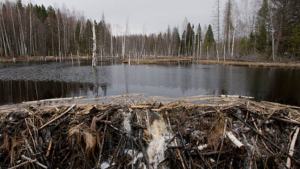


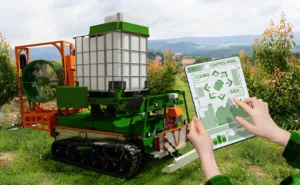

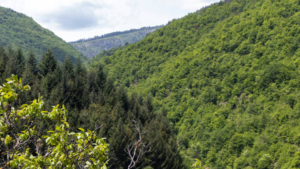

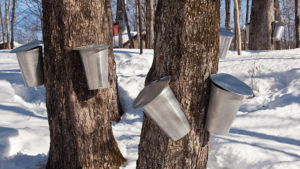
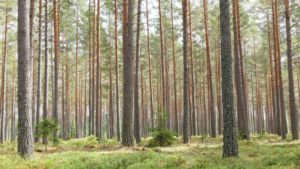
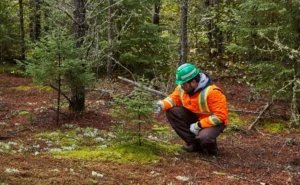

Leave your comment